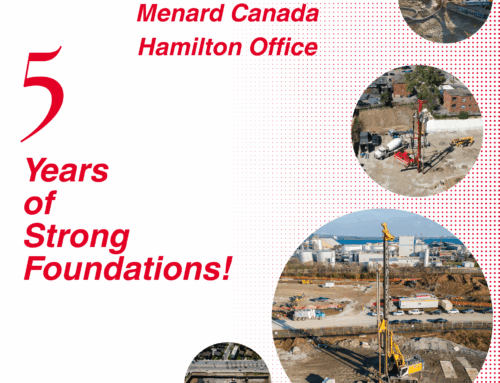ST-ONGE, Benoit(1), RACINAIS, Jerôme(2), BURTIN, Pierre(3), CAHEN, Sacha(2)
(1)Menard Canada, Montreal, Québec, Canada
(2)Menard, Paris, France
(3)Menard, Lyon, France
ABSTRACT
Rigid Inclusions (RI) or Controlled Modulus Columns (CMC) is a soil reinforcement technique increasingly used in the Canadian market. The rigid inclusion system is constituted of cementitious columns with a diameter ranging from 250 mm to 450 mm installed at a regular pattern. On top of the system, between the top of the RI and the structure to be supported, a compacted layer of granular material called Load Transfer Platform (LTP) is generally installed. Rigid inclusions are often used to reduce settlement induced by embankments. However, when RI are used to support a low height embankment, the thickness of the LTP may be insufficient to fully engage the arching effect, thereby, creating a punching shear failure within the LTP. Some recommendations, based on the principles of limit states, have been developed by the British Standard Institution (BS8006-1), the Federal Highway Administration (FHWA) and by ASIRI on the minimum thickness of LTP (Hcritical). Recommendations are limited and do not distinguish between stiffer and softer subsoil profiles. This article covers the studies and recommendations of Menard, developed from numerical models and case studies, for the design of rigid inclusions under low height embankments.
To read the entire article, please download the pdf
[addtoany]





